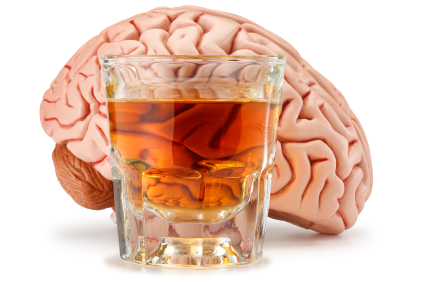Protect Your Liver
It is important for people to stay alert towards liver ailments, and avoid alcohol abuse, unhealthy diet, obesityand a sedentary lifestyle

Over two lakh people lose their lives every year in India due to liver disease. One in every five Indians suffers from liver problems and the most frequent causes are alcoholic liver disease, Hepatitis B, Hepatitis C and obesity-related liver disease. Liver transplantation is the most effective treatment for an acute and chronic liver and it is the only available treatment for the end-stage liver disease. While around 20,000 people require liver transplantation, only 2,000 transplantations are done in the country on annual basis.
In more than 90% cases, patients don’t realise that they have a liver disease until it is late. What is worse is that the cost of treatment for liver ailments especially in later stages is exorbitantly high.
According to WHO data published in May 2014, liver disease deaths in India reached 216,865 or 2.44% of total deaths. The age adjusted death rate stood at 21.96 per 100,000 of population.
Contrary to popular belief, even non-alcoholics can fall prey to deadly liver diseases. Though alcohol usage itself is not so good for health, the least people should know beyond which point it can pose a health risk. Alcohol abuse continues to cause maximum cases of liver cirrhosis. But in recent years, viral hepatitis infections as well as non alcoholic fatty liver disease (NAFLD) associated with diabetes, obesity and sedentary lifestyle too are on the rise.
It is important for people to stay alert towards liver ailments, as liver diseases are a silent killer. People would not even realise that they have this problem till one day when it becomes serious. There are usually no early symptoms and even later it may present itself as simple fatigue, anaemia, recurrent jaundice and swelling in leg or a low platelet count. While early detection of liver ailments can be done by simple screening tests, preventive measures especially for high risk groups are crucial.
Common liver problems:
The liver is situated on the upper right side of the abdomen, just below the diaphragm. It is the largest internal organ of the human body and weighs around 1.5kg in the average adult. Blood from the digestive system must first filter through the liver before it travels anywhere else in the body.
The principal roles of the liver include removing toxins from the body, processing food nutrients and helping to regulate body metabolism. A range of conditions can prevent the liver from performing its vital functions. Culprits include fat accumulation, alcohol misuse, viral infection, iron or copper accumulation, toxic damage and cancer.
Functions of the liver
Some of the many functions of the liver include:
Drugs, including alcohol, are filtered through the liver and neutralised or converted into other forms by special enzymes.
Bile, produced by the liver, is stored in the gall bladder and used to help break down dietary fats.
Fat soluble vitamins A, D, E and K need bile in order to be absorbed by the body.
The liver converts carbohydrates into glucose for instantly available energy and converts glucose into its storable form (glycogen). When blood sugar levels drop, glycogen is converted back into glucose.
Amino acids from protein are sent to the liver for the production of body proteins such as hormones.
The liver changes ammonia (a toxic by-product of protein metabolism) into urea, which is then excreted in urine.
Symptoms of disease
Symptoms of liver disease depend on the disorder, but can include:
Jaundice (the skin or whites of the eye turn yellow)
Dark urine
Nausea
Vomiting
Diarrhoea
Appetite loss
Weight loss
General malaise
Fever
Bloated abdomen, swollen ankles
Abdominal pain in the upper right side
Anaemia, vomiting blood or passing black stools (denoting altered blood)
Changes in mental state – altered sleep pattern (awake at night), confusion, and drowsiness.
Common liver diseases
Fatty liver – This is the most common of the alcohol-induced liver disorders. Fat accumulates inside the liver cells, causing cell enlargement (steatosis) and sometimes cell damage (steatohepatitis), and can lead to cirrhosis. Similar changes are also seen in people who do not drink excessive amounts of alcohol but are overweight, obese or have diabetes. The liver becomes enlarged, causing discomfort on the upper right side of the abdomen.
Cirrhosis – This has many causes but is commonly due to hepatitis infection or excessive alcohol intake. The cells of the liver are progressively replaced by scarred tissue, which seriously impairs liver functioning.
Hepatitis – A general term meaning inflammation of the liver. It is also used to refer to infections of the liver by specific viruses (hepatitis A to E).
Haemochromatosis – This inherited disease makes the body absorb and store higher than normal amounts of iron. This damages many organs including the liver, pancreas and heart.
Autoimmune liver disorders – An abnormal increase in immune cells damages the liver cells. These rare conditions include autoimmune hepatitis and primary biliary cirrhosis (mostly women affected) and primary sclerosing cholangitis (more common in men).
Cancer – Primary cancers can arise in the liver, most often from chronic hepatitis with cirrhosis. Stray cancer cells from a tumour elsewhere in the body may cause a secondary tumour in the liver.
Galactosaemia – The body’s reaction to particular milk sugars damages the liver and other organs. This is a rare inherited disorder.
Alpha 1-antitrypsin deficiency – Another rare inherited disorder that can cause cirrhosis of the liver.
Wilson’s disease – The liver can’t excrete copper. Various organs of the body, including the liver and brain, are affected by the excessively high copper levels.
Complications of liver disease
Without treatment, a person with liver disease is susceptible to a wide range of complications, including:
Hepatic encephalopathy – Scar tissue prevents the proper flow of blood through the liver, so that toxins remain. These circulating toxins, particularly ammonia, affect brain functioning and can lead to a coma.
Ascites – Liver disease can cause a build-up of body sodium (‘salt’), which leads to fluid retention in the abdominal cavity (ascites) and in the legs, feet and back (oedema).
Liver failure – The liver cells are destroyed faster than the liver can replace them, until the organ can no longer function adequately.
Cancer – cirrhosis or some forms of hepatitis can make the liver more susceptible to primary cancer (cancer that originates in the liver).
Gastrointestinal bleeding – The veins that normally travel through the liver may be blocked because of cirrhosis. These veins then bypass the liver and may travel along the stomach or oesophagus lining, where they may rupture and bleed.
Precautions to protect liver
Avoiding alcohol and any drugs that might damage the liver
A well-balanced, nutritious diet – some people require a modified diet (for example, low salt)
Medications, such as antiviral drugs to treat viral infections
Specific medications to manage Wilson’s disease.
(The author is Sr Consultant, Gastroenterology, Sir Gangaram Hospital, New Delhi)

